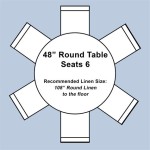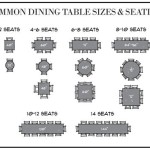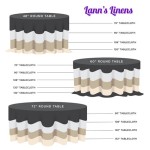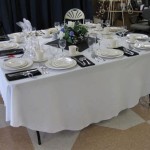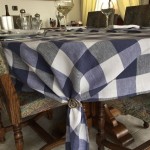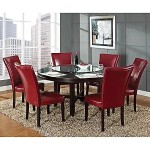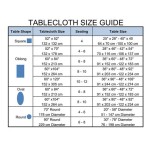When it comes to setting up seating at round tables, it can be tricky to figure out the best way to arrange everyone. Whether you’re planning a wedding, birthday party, or corporate event, a carefully planned seating chart is important for ensuring that everyone gets the most out of the experience. Here are some tips on how to create the perfect seating chart for round tables.
Grouping Your Guests
Before you start laying out the seating plan, it’s important to consider the dynamics of the group. Think about who should be seated together to ensure that everyone feels comfortable and has a good time. For example, if you’re hosting a wedding, you may want to seat family and friends together who share similar interests or backgrounds. You may also want to separate certain guests who don’t get along or may clash with each other.
Choosing the Right Table Size
The size of the tables you choose will depend on the size of your guest list. Round tables typically come in sizes that range from four to 12 people. If you’re hosting a smaller event, you may want to opt for tables with fewer chairs so that everyone can have a more intimate experience. On the other hand, if you’re hosting a large gathering, you may want to choose tables that have more chairs so that everyone can be accommodated.
Creating an Aesthetically Pleasing Seating Plan
Once you’ve figured out the size of the tables and who should be seated together, it’s time to start laying out the seating plan. When creating an aesthetically pleasing seating plan, it’s important to consider the size and shape of the room. If the room is large, you may want to create an open and airy atmosphere by leaving enough space between tables and arranging the tables in a circular or oval pattern. If the room is small, however, you may want to opt for a more linear seating plan.
Using Place Cards
Place cards are a great way to make sure that everyone is seated in the right spot. Place cards can also be used to add a personal touch to the event. You can use place cards with the guests’ names on them, or you can use them to indicate who should be seated at each table. You can also use place cards to indicate the seating order at each table.
Final Thoughts
Creating the perfect seating chart for round tables can be a daunting task. However, with careful planning and consideration for the dynamics of your group, you can ensure that everyone has a great time. By following the tips outlined above, you can create a seating plan that is both visually appealing and functional.















Related Posts

